There’s a growing crop of Japanese food lovers in Taipei gravitating towards more leisurely establishments and open-air sake bars. But devoted connoisseurs have been holding fort at Mitsui Cuisine M (三井 Cuisine M), the newest branch of the Mitsui Food and Beverage Enterprise Group located in the heart of posh Xinyi District (信義).
Hidden in a discreet back corner off Songzhi Road in the Citibank building opposite Eslite bookstore, Mitsui Cuisine M combines aesthetics with the freshest quality seafood. The decor includes floor-to-ceiling windows, high walls and an impressive wine display. Chandeliers made out of dangling forks which resemble aquatic life add a quirky touch to the otherwise classy ambiance.
While lunch sets are either NT$1,200 or NT$1,500, the dinner sets are pricier at NT$1,800, NT$2,800 and NT$3,800. Waiters, or “advisers” as they are called, are more than happy to introduce the dishes on the set menu which may vary according to the ingredients in stock on the day.
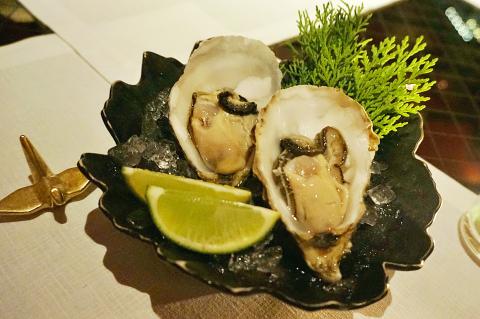
Photo: Dana Ter
The NT$2,800 set consisting of a nine-course meal is a fine choice. Regardless of which set you choose, though, presentation is paramount and each dish is the making of a meticulous artist. Taste-wise, garnishing and sauces are used to enhance the natural freshness of the food rather than overpower it.
There’s a saying that an Italian restaurant can be judged by the quality of its bread. The same can be said for oysters in a seafood restaurant. The bigger the oyster the greater the risk of it tasting too rubbery. Mitsui’s oysters, although big, are silky and delicate. Served on a shell-shaped plate filled with small chunks of ice, it gives the impression of being fresh from the ocean.
Alternating between raw and cooked, cold and hot, the rest of the set follows the “fresh from the ocean” theme. Contrasting flavors are a key motif in the food at Mitsui Cuisine M. Served in an earthenware plate, the second course, which is steamed fish soaked in warm broth is lightly drizzled with shreds of lobster meat and scallion bits. The natural sweetness of the lobster and tinge of onion flavor from the scallions provides a nice contrast to the smooth, velvety textures of the fish.
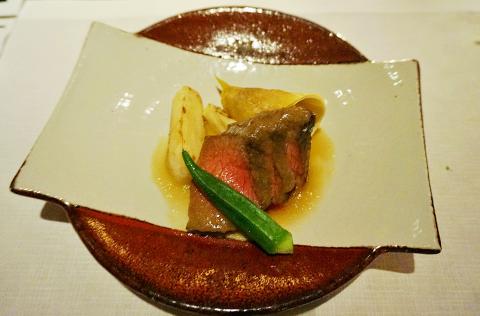
Photo: Dana Ter
The black abalone, a rarity in itself, is cut into slices that are fine and succulent, pairing well with the chilled sliced apple, lettuce and asparagus. By contrast, the seared scallop fresh from the pan is warm, firm and cod-like. The dollop of green tartar-like sauce adds a sultry feel.
Next up is the dish that the Mitsui group is most famous for — its assorted sashimi platter.
The presentation takes into consideration colors, contours, background and foreground, while the sashimi, moist and glistening, beckons one’s taste buds. Biting into it, the taste is light and heavenly — a perfect combination given the sweltering heat outside, even at night.
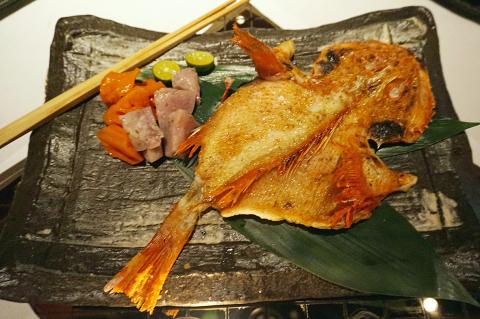
Photo: Dana Ter
After several courses of raw delicacies, it’s fitting that the remainder of the dishes are cooked. Encased in an earthenware bowl decorated with inedible leaves, the crab looks like it’s attempting to crawl out of its habitat. The soft delicateness of the crab meat is best savored with the ginkgo nuts sprinkled in the bowl.
The last two courses before dessert — grilled red throat emperor and sliced beef — should fill you up. The grilled fish which is more of an orange hue, is crispy on the outside and juicy on the inside. Meanwhile, the medium-rare beef served in light gravy sauce adorned with lady’s finger is just the right amount of softness and chewiness.
The interplay between sight, taste and touch makes the dining experience at Mitsui Cuisine M uniquely multi-sensory. Do not be dissuaded by the prices — being true value for your money, the food will have you believing that you are dining by the Pacific Ocean rather than in the midst of malls, night clubs and skyscrapers.
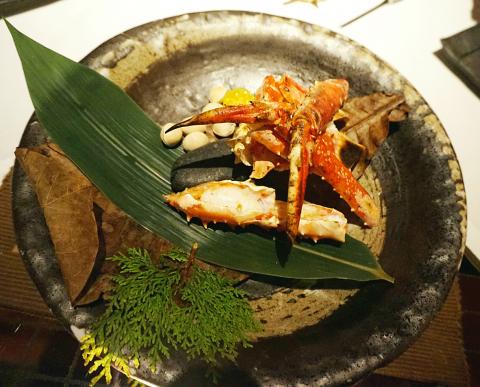
Photo: Dana Ter
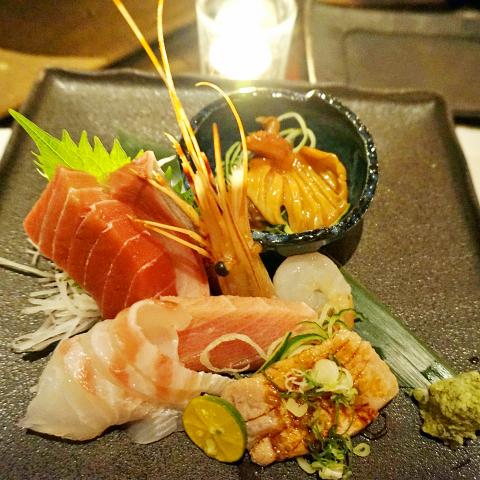
Photo: Dana Ter

April 14 to April 20 In March 1947, Sising Katadrepan urged the government to drop the “high mountain people” (高山族) designation for Indigenous Taiwanese and refer to them as “Taiwan people” (台灣族). He considered the term derogatory, arguing that it made them sound like animals. The Taiwan Provincial Government agreed to stop using the term, stating that Indigenous Taiwanese suffered all sorts of discrimination and oppression under the Japanese and were forced to live in the mountains as outsiders to society. Now, under the new regime, they would be seen as equals, thus they should be henceforth
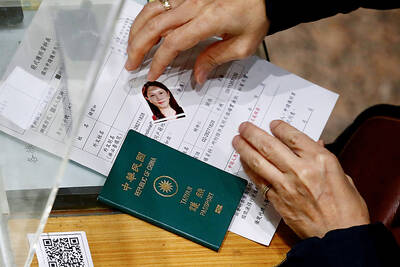
Last week, the the National Immigration Agency (NIA) told the legislature that more than 10,000 naturalized Taiwanese citizens from the People’s Republic of China (PRC) risked having their citizenship revoked if they failed to provide proof that they had renounced their Chinese household registration within the next three months. Renunciation is required under the Act Governing Relations Between the People of the Taiwan Area and the Mainland Area (臺灣地區與大陸地區人民關係條例), as amended in 2004, though it was only a legal requirement after 2000. Prior to that, it had been only an administrative requirement since the Nationality Act (國籍法) was established in
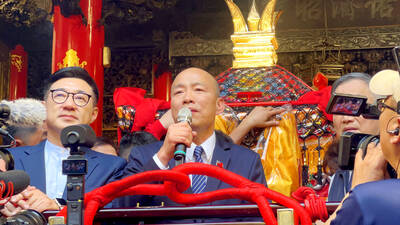
Three big changes have transformed the landscape of Taiwan’s local patronage factions: Increasing Democratic Progressive Party (DPP) involvement, rising new factions and the Chinese Nationalist Party’s (KMT) significantly weakened control. GREEN FACTIONS It is said that “south of the Zhuoshui River (濁水溪), there is no blue-green divide,” meaning that from Yunlin County south there is no difference between KMT and DPP politicians. This is not always true, but there is more than a grain of truth to it. Traditionally, DPP factions are viewed as national entities, with their primary function to secure plum positions in the party and government. This is not unusual

US President Donald Trump’s bid to take back control of the Panama Canal has put his counterpart Jose Raul Mulino in a difficult position and revived fears in the Central American country that US military bases will return. After Trump vowed to reclaim the interoceanic waterway from Chinese influence, US Defense Secretary Pete Hegseth signed an agreement with the Mulino administration last week for the US to deploy troops in areas adjacent to the canal. For more than two decades, after handing over control of the strategically vital waterway to Panama in 1999 and dismantling the bases that protected it, Washington has